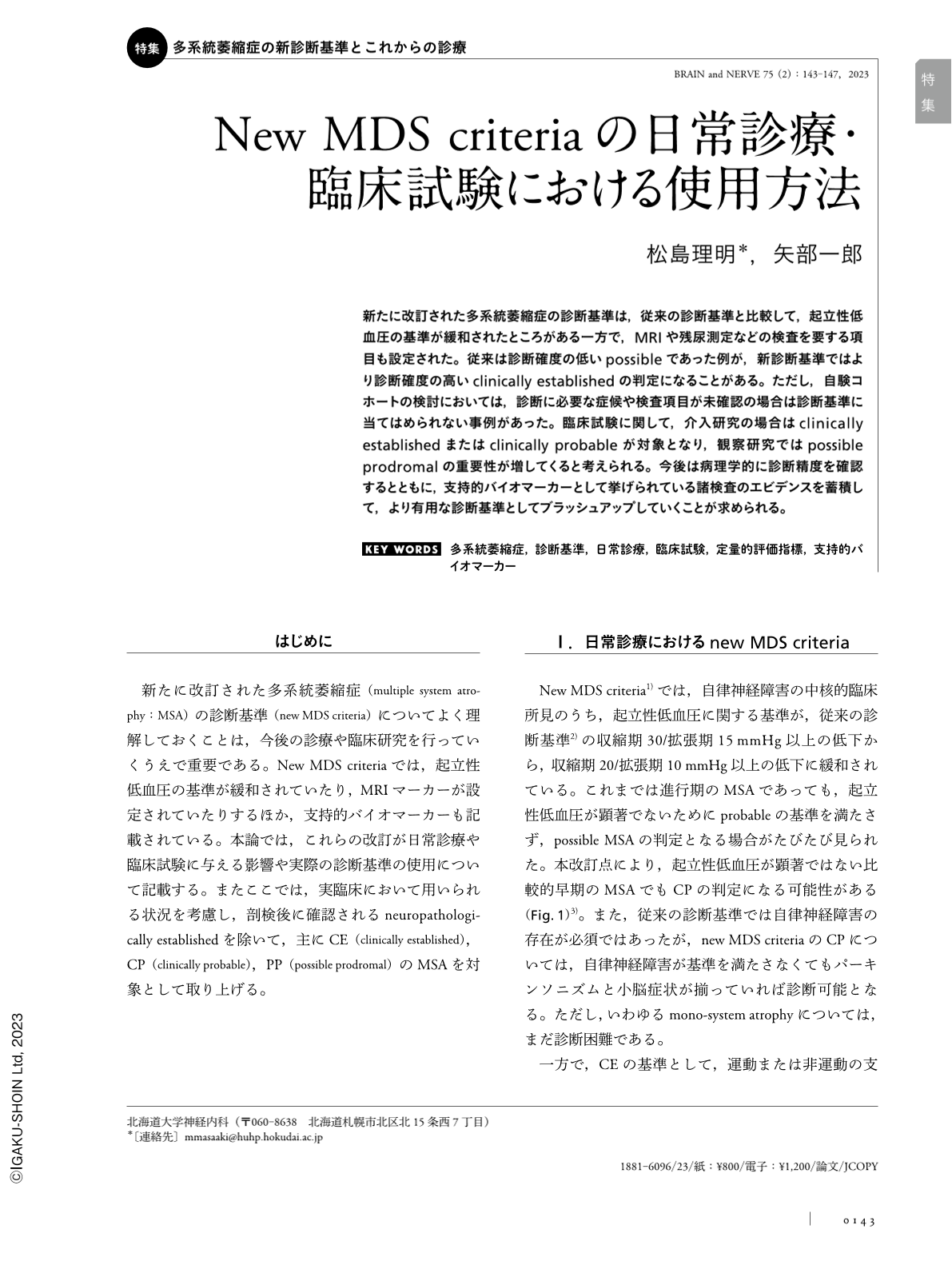Japanese
English
- 有料閲覧
- Abstract 文献概要
- 1ページ目 Look Inside
- 参考文献 Reference
新たに改訂された多系統萎縮症の診断基準は,従来の診断基準と比較して,起立性低血圧の基準が緩和されたところがある一方で,MRIや残尿測定などの検査を要する項目も設定された。従来は診断確度の低いpossibleであった例が,新診断基準ではより診断確度の高いclinically establishedの判定になることがある。ただし,自験コホートの検討においては,診断に必要な症候や検査項目が未確認の場合は診断基準に当てはめられない事例があった。臨床試験に関して,介入研究の場合はclinically establishedまたはclinically probableが対象となり,観察研究ではpossible prodromalの重要性が増してくると考えられる。今後は病理学的に診断精度を確認するとともに,支持的バイオマーカーとして挙げられている諸検査のエビデンスを蓄積して,より有用な診断基準としてブラッシュアップしていくことが求められる。
Abstract
The newly revised diagnostic criteria for multiple system atrophy (MSA) have reduced the criteria for diagnosing orthostatic hypotension compared to the conventional diagnostic criteria, but require tests such as MRI and residual urine measurement. Under the new diagnostic criteria, cases that were previously classified as possible MSA with low diagnostic accuracy may become clinically established with higher diagnostic accuracy. However, examination of the cohort treated in our establishment showed that there were cases in which the diagnostic criteria could not be applied when the symptoms and test items necessary for diagnosis were not confirmed. In clinical trials, clinically established or clinically probable MSA are targeted for interventional studies, and possible prodromal MSA are considered to be more important for observational studies. In the future, it will be necessary to confirm the diagnostic accuracy pathologically, accumulate evidence from various clinical tests that are listed as supportive biomarkers, and to develop more useful diagnostic criteria.

Copyright © 2023, Igaku-Shoin Ltd. All rights reserved.


